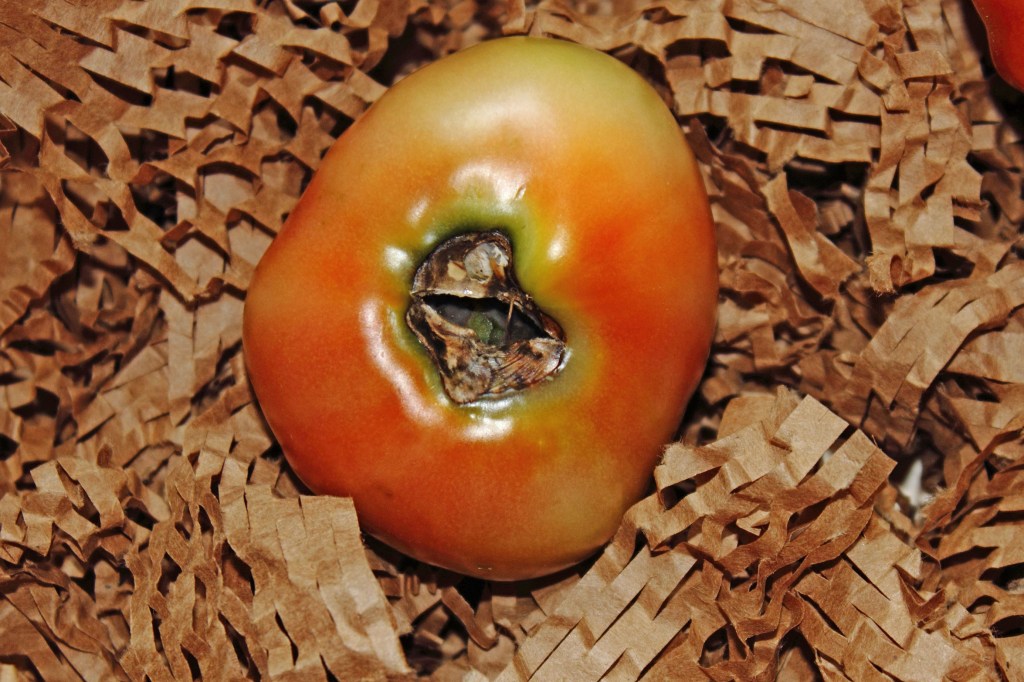Garden Spot: Blossom end rot in tomatoes
Published 6:00 am Wednesday, July 19, 2017

- Blossom end rot occurs as a result of calcium deficiency within the plant. This deficiency is typically induced by fluctuations in the plant's water supply.
Perhaps you are one of many folks having trouble with your tomatoes. Specifically, maybe you’ve noticed brown spots near the base of the fruit. They start out small but continue to increase in size. What is this disease and how can you do to get rid of it?
Well, if it is any consolation, you are not alone. Growers everywhere have the same tomato malady as you. The culprit is blossom end rot (BER) and is actually a physiological disorder, not a disease. It is easily identified as a brown, leathery rot developing on or near the blossom-end of the fruit. It starts with a dry brown, dime-sized lesion, generally increasing in diameter as the condition worsens. In time, the lesions often become covered with a black mold.
Blossom end rot occurs as a result of calcium deficiency within the plant. This deficiency is typically induced by fluctuations in the plant’s water supply. Due to the fact that calcium is not a highly ‘mobile’ element in the plant, even brief changes in the water supply can cause BER. Droughty soil or damage to the roots from excessive or improper cultivation (severe root pruning) can restrict water intake, preventing the plant from getting the calcium that it needs. Also, if plants are growing in highly acidic soil or are getting too much water from heavy rain, over-irrigation, or high relative humidity, they can develop calcium deficiency and BER. To control BER, take the following steps:
• Keep the pH of the soil at 6.0 to 6.5. Perform a soil test and apply the recommended rate of lime, using dolomitic or high-calcium limestone. This step should take place ideally two to four months before planting tomatoes.
• Apply the required amount of fertilizer when necessary based on soil test results for tomato. Applying too much fertilizer at one time can induce BER. Following soil test recommendations is the surest way to fertilize properly.
• Use mulches, such as pine straw, composted sawdust or newspapers, to conserve moisture.
• Give your plants adequate water. Tomato plants need about 1.5 inches of water per week during fruiting. Extreme fluctuations in soil moisture can result in a greater incidence of BER.
• If your plants develop blossom end rot, drench the root zone with a calcium solution at the rate of 4 level tablespoons of calcium nitrate or calcium chloride per gallon of water. If day temperatures are greater than 85 to 90 degrees, do not use calcium chloride, as foliage burn can occur. Calcium nitrate is the better option for our hot summer days. One note: Applying calcium is not a substitute for proper irrigation and fertility management.
• Some varieties of tomato tend to be more sensitive to conditions that cause BER. Try growing several varieties and keep notes as to their performance.
• If you experience severe problems with BER, you should remove the infected fruits. Once a fruit develops BER, it will not re-grow or repair the infected area. In fact, the damaged area could serve as an entry point for disease-causing bacteria or fungi.
In general, it’s easier and cheaper to take steps early to prevent blossom end rot in tomatoes than it is to treat the problem once it shows up.
— For information on topics related to home and garden, contact any office of the Alabama Cooperative Extension System. The Limestone County Office, located at 1109 W. Market St. in Athens, is open from 8 a.m. until 4:30 p.m. Mondays through Fridays. To find out more, call 256-2325510 or visit www.aces.edu.





